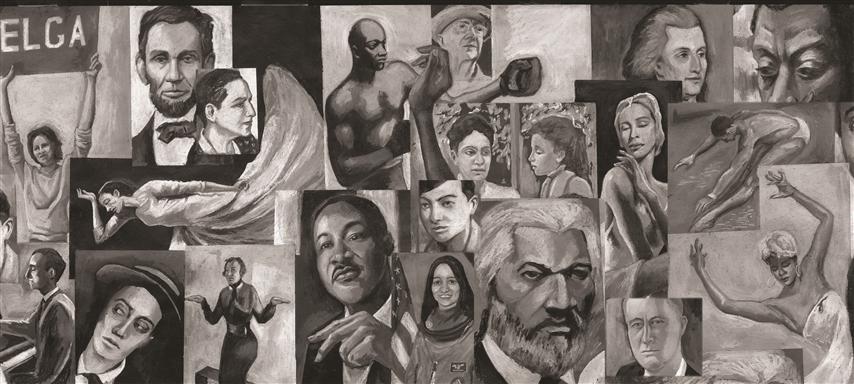On September 11, 2001, Christopher Myers called his father
on the phone. "Dad, check out the television. A plane just flew into the
World Trade Center," he said. "Not to be outdone," Walter Dean
Myers recalls, "I said, 'I remember back in 1947, a plane flew into the
Empire State Building.' " But then the second plane hit. Two months
later, Myers was in London with his wife, Connie (Christopher's mother), when a
plane malfunctioned and crashed in Queens, N.Y. A group of Middle Eastern men
were on a London street, watching the crash on television through the window of
an appliance store, cheering because they believed it was an act of terror. The
author's complex reactions to these two events sent him on a journey to
rediscover what America means to him. Christopher Myers, as the artist, went on
an odyssey of his own. But as Christopher puts it, "To be honest, these
are conversations, we've been having since I was a kid." Here they let us
in on the conversation about how their paths converged in the majestic We Are America.
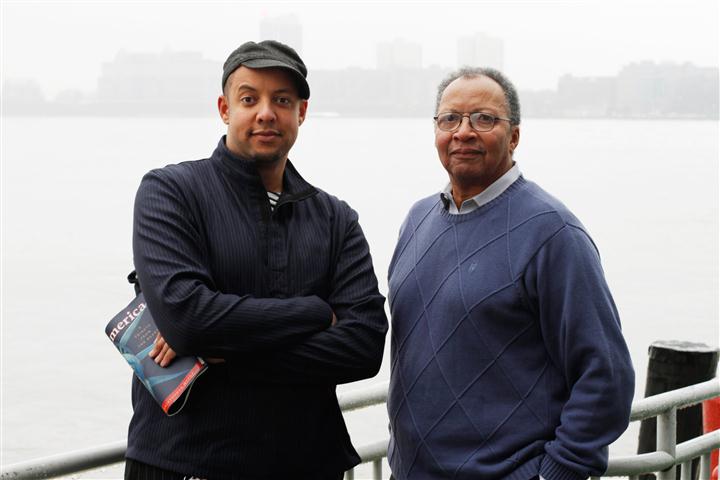 From your foreword,
it seems that this book grew from a place of great feeling. Did the first draft
come to you in a rush?
From your foreword,
it seems that this book grew from a place of great feeling. Did the first draft
come to you in a rush?
Walter Dean Myers: No,
it did not. I started with a very
formal, very strict rhythm. I thought, "It's not working for me. I should
just write it as I feel it and see what happens," and I did a moderately
fast first draft. Then I looked at some of my lines, and I realized I was
paraphrasing. So I began looking at the originals. Then I thought, "This
guy said it better than I did." Sometimes it was better because the language
was more direct. It was so charged with emotion under the original
circumstances. I began to make a concerted effort to incorporate them. Then I
said, "No, take them out of my material because it's necessary to put
these things into context." That gave me a lot of freedom. I could write
the way I felt, have these quotations on the side, and hope that my editor
would go for it.
As you went through
those original documents, how did you decide which quotes to use in the poem?
WDM: Sometimes I'd
find, while looking through a speech, something I hadn't put in the book, and
think, "let me go and mention this." I hadn't read a lot of it since
I was in high school. They were so stirring and to the point. You also find
people serving their own purposes, twisting things--twisting Lincoln, twisting
Jefferson. It's a damn shame that Jefferson is known to many people only by the
fact that he might have had an affair with Sally Hemings.
Christopher Myers:
What's also odd about the way people think about these Founding Fathers, is
they think about them as people who lived without conflict, who lived as these
unified thinkers. That takes away from the strength of what it means to be
American. In fact, these guys were debaters, they were thinkers. That's the beauty
of this place, that it was founded on the idea of, "Let's make changes,
let's discuss." There's the Federalist Papers, but you look even in the
work of Jefferson, there's tumult. This is not a country about stasis, this is
a country based on tumult. And how does one deal with that?
WDM: That's a
good point. You don't make a lot of good points.
CM: Once in a
blue moon.
Was Walt Whitman an
influence for this piece? I thought of "I Hear America Singing" with
its hymn to the satisfaction to be gained from one's work, and also "One
Song, America, Before I Go."
WDM: I've always
been moved by Whitman. He is, to me, America's greatest poet. It's not a poetry of detachment, it's not a
poetry of abstraction. It's a poetry of love. I was very much conscious of his
influence.
Then there are the
ongoing themes of liberty and captivity throughout the poem. These kinds of paradoxes
are still with us, aren't they?
CM: That for me
is part of what I love about this place, is that we are able to acknowledge and
to think about our history. I travel a lot, [and in] other places, they work
very hard to have a very short memory of their countries--"We sprung up
out of nowhere whenever the last regime started." One of the gifts of this
place is we can think about and openly acknowledge and openly debate and
discuss our history. It's not that I'd ever look at this country and say
nothing bad ever happened. I'm the product of some of that bad that has
happened, slavery being the emblematic one. At the same time, there are very
few places in the world that can be so self-corrective.
WDM: One of the
things, talking about slavery, this is a country that brought an end to slavery
around the world. American debate brought an end to slavery. It was the
American Civil War that brought an end to slavery around the world. England
followed us; we did not follow England. As C.L.R. James said, they didn't need
slaves in England to do the work, so they could abolish it by keeping it in the
islands. Then they didn't need it in the islands because they had already a
virtually captive workplace. Although the British abolished slavery before
America, it was the American debate that caused that, in my view. Americans
talked about ending the powers of slavery more openly and more widely than
anyone in the world--that idea of freedom of speech, the idea of debating, the
idea of open conversation, it's still so great.
CM: When you ask
yourself, "What is America?" there are a lot of definitions. As much
as America is the people and the geography, America is also a set of ideas that
are very beautiful ideas, a lot of them. That was a big challenge of this book,
to contain all those definitions of America, to contain the people, the land,
the history, and the ideas. I would put ideas last.
WDM: I'll put
ideas first, just to be different.
CM: That's cool.
Rewriting runs thick in this family.
For the spread that
begins "Like clumsy children/ we fell/ as we learned to run," would
you call the references to Wounded Knee and Chapultepec Castle early examples
of the kind of present-day jingoism to which you refer in your foreword?
WDM: We have a
constant struggle in America. The people who want to achieve power will often
address that achievement as patriotism. It's no coincidence that the people who
portrayed themselves as the most patriotic are also the ones with the most guns--with
the most threats, either veiled or unveiled. The build to power is so great, so
fantastic, but what these people are doing is they are saying, "Well, this
power is not just me, it's my love of country." When you go into the
history of the country and who stood up for the country, who fought for the
country, who worked for the country, it's never these people. It's always small
people who saw a sense of duty and did it.
CM: We've talked
about these things since the inception of this country. That is what our
history gives us. Hopefully this book is a tool for a young child or
middle-schooler or an adult who would read the book with a child, to start them
on a journey to discovering their own America. As Dad says, it's the people who
have come in from the side--the immigrants, the poor, the women--who have found
ways to make this country better.
Is that, in part,
what informed your decisions about which individuals to include in your
paintings?
CM: There were
several things going on in my election of Americans. I wanted to think about
Americans that were unsung--Americans that did something to change the way
Americans were viewed both at home and abroad. There are some wonderful lines
about the landscape of America that Dad had written. What's amazing about
America is how the diversity of the landscape mirrors the diversity of the
people. You take, for example, Duke Kahanamoku, who's known as the father of
modern surfing, a Hawaiian guy. Here he is, a tall dark brown man who lived in
the water and represented the U.S. in swimming events in five Olympics. He went
around the world, spreading surfing and spreading the good will that he'd grown
up with in Hawaii. The idea of what an American was changed. He changed it--as
did all of the people that I elected after many debates along the way. To be
honest, that's all of our jobs in some way. Sometimes I travel in Asia; I was
recently in Sudan. You tell people, "I'm an American." Certain places
they look at you with incredulity. They say, "Americans look like this,
Americans look like that." You want to say, "No, Americans look like
me."
WDM: That
happened to us in a village in Egypt, a guy looked at us and asked, "Who
are you people?" We said, "Americans." They didn't want to
accept us. They accepted Connie [who has fair skin] as an American but not me.
CM: People have
this idea of Americans as being all blond-haired, blue-eyed cowboys or
raven-haired socialites. Whatever the latest television show is. I'm always a
bit taken aback. That was one of the things I wanted to talk about in the book
visually. There are different classes, races, different articulations of self
that are all equally American in the fact that they couldn't exist anywhere
else.
So many of the images
take on a mural-like quality. I thought of the WPA project murals. Did they
evolve into layered works? Did you do a lot of sketches first?
CM: One of the
chief influences of the art in the book is the Mexican muralists and the
muralists of the WPA. There's a lot of cross-pollination between them, everyone
from Aaron Douglas to Thomas Hart Benton, who did these WPA murals that tried
to wrangle entire histories of countries and entire intellectual trajectories.
The hard part is doing something that can match the anthemic and
all-encompassing tone of the text, as well as--Dad talked about Whitman's
quality of love. Love is big, love is open, especially the love that I have for
my country. The strategy of muralists, and of people who want to tell this
layered, rich history, is to add richness in that layering. Not one of the
pieces would work without that layering. That being said, there were a lot of
preparatory sketches, a lot of internal debate.
The paintings themselves
were 9' x 3', weren't they? Did you just lay them all around your studio and live
inside them?
CM: About 9' x 3',
yes. They took up a lot of space in my studio. And yes, pretty much, that's
what I did for months on end, with occasional phone calls from Phoebe [Yeh],
our editor. She'd say, "So how's it going?" And I'd say, "Right
now I'm sleeping in the sky that is being trod upon by a Mohawk skyscraper
worker in the 1940s." For me, it felt like taking a thousand mice and trying
to hook them up to a chariot.
WDM: And making
promises left and right, "Don't worry, Dad, it's coming soon."

Your images often
point out a paradox when laid out against the text, such as the image for "We
were willing to die/ to forge our dream," where you show the violent
response to the peaceful civil rights demonstrations against the founding
fathers' words, then you also join that together with the colonists risking
their lives to resist King George III.
CM: For me, that
spread is about seeing our country as being a country in which the history of
debate and protest are central. People try to take away the through line,
often. They want to say that my debate was different than your debate; my
struggle for rights was different than your struggle for rights. When in fact,
you're still coming back to the same amazing, beautiful, brilliant and flexible
and open documents. You're saying, look, through these documents, let me assert
my right for humanity. It's important to remind ourselves that the Civil Rights
movement was in some ways the realization of the independence dreams that were
had in the 1700s, to see those through lines, to lengthen our concept of
history. I tried to focus on Americans whose speech was important, who spoke
with their art, who spoke with their words, with their statesmanship, with
their science. This is not a country that tells people that they need to be
quiet. This is a country that says, "What do you have to say? We want to
know."
Your first
picture-book collaboration was Harlem
in 1997. In what ways was it different to work on this book, or does it feel
like part of a continuum?
WDM: For me, it
felt like a continuum, because I think what you do with literature is you
define yourself, and you define your place. How I know who I am is how I define
the world around me. I took Christopher to Harlem as a kid, and showed him all
the places I triumphed. [Laughs.] I think he understood how I was defining
Harlem; he took it from there. As we talk about this idea of America, I'm
listening to the conversations that we're having now. You mentioned
Chapultepec, and Christopher and I were there, and defining that, and defining
ourselves in Egypt, and defining ourselves in London [where I live] five weeks
a year. So we're constantly defining ourselves and discussing it. I see it as a
continuum. What do you think, Chris?
CM: I absolutely
see it as a continuum, but specifically because--we talk about Harlem and the
United States as geographic spaces, but more than geographic spaces, they're
conceptual spaces. They're places you write songs about. This is our song.
Harlem is a conceptual place, Harlem is a place I look to both as a home, and
as an exemplar of an artistic moment and a cultural moment that very strongly
relates to me. Similarly, in a larger way, America is a conceptual place. There
is a song that is there to be sung about diversity, about ideals, about hope,
about dreaming. We're both, I think, very excited to have added our voices to
the chorus.
Photo: Malin Fezehal





 From your foreword,
it seems that this book grew from a place of great feeling. Did the first draft
come to you in a rush?
From your foreword,
it seems that this book grew from a place of great feeling. Did the first draft
come to you in a rush? 

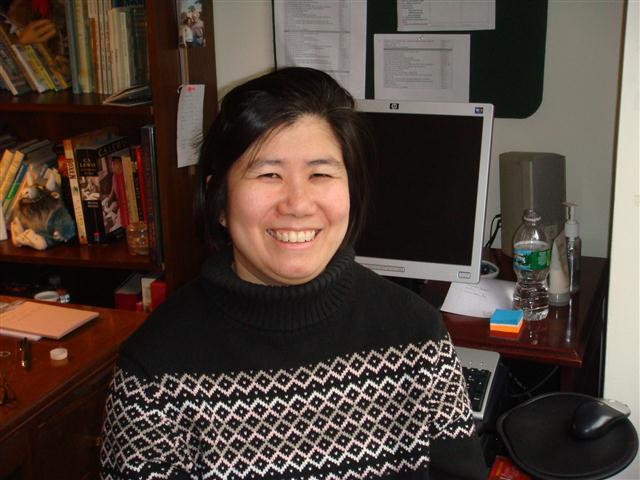 After Myers sent We
Are America to Yeh, she called him the next day and told him, "I'm
thinking this is for Chris to illustrate." She believed that Christopher
Myers had the "intellectual curiosity" to meet the challenge of the
text. It took him three years to illustrate the project. "When you see the
book, it makes perfect sense," said Yeh. "He had to come up with the
entire visual landscape for every spread. There was so much content. With [the
poem's] reference to the boats, for example, people would have expected
Christopher Columbus, and he showed John Smith." Around year two, Yeh got
to see a sample of the artwork--nine feet wide. "We
got nervous because we thought, 'We've never shot a book like this. How are we
going to do it? Where's the type going to go?" Martha Rago, the designer,
had to come up with a layout that would integrate long, flowing lines of
poetry, the quotes from the original documents and expansive horizontal artwork.
The art vignettes were Christopher Myers's idea. "I want kids to focus and
to look closely," he told Yeh. He felt that pulling out a detail from the
artwork would help them do that. He also suggested the classical typeface.
After Myers sent We
Are America to Yeh, she called him the next day and told him, "I'm
thinking this is for Chris to illustrate." She believed that Christopher
Myers had the "intellectual curiosity" to meet the challenge of the
text. It took him three years to illustrate the project. "When you see the
book, it makes perfect sense," said Yeh. "He had to come up with the
entire visual landscape for every spread. There was so much content. With [the
poem's] reference to the boats, for example, people would have expected
Christopher Columbus, and he showed John Smith." Around year two, Yeh got
to see a sample of the artwork--nine feet wide. "We
got nervous because we thought, 'We've never shot a book like this. How are we
going to do it? Where's the type going to go?" Martha Rago, the designer,
had to come up with a layout that would integrate long, flowing lines of
poetry, the quotes from the original documents and expansive horizontal artwork.
The art vignettes were Christopher Myers's idea. "I want kids to focus and
to look closely," he told Yeh. He felt that pulling out a detail from the
artwork would help them do that. He also suggested the classical typeface.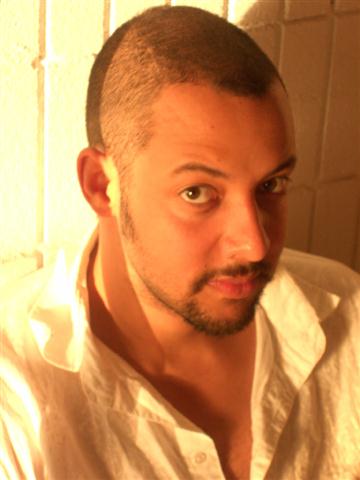 On your nightstand
now:
On your nightstand
now: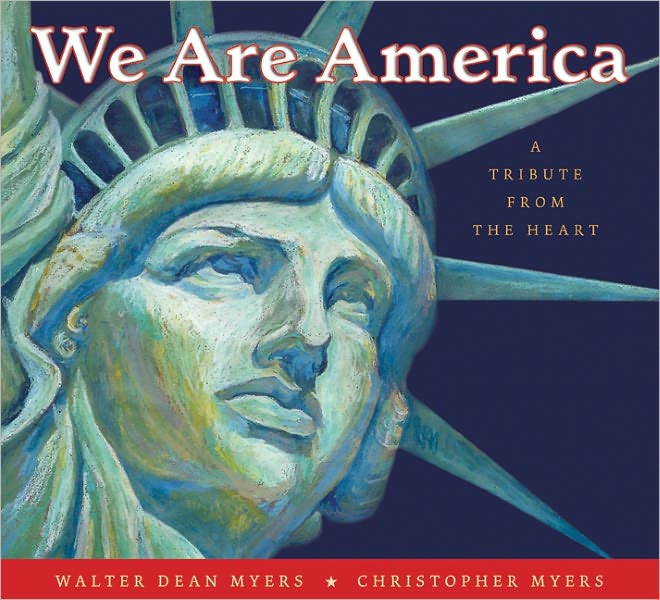 This glorious picture book by the father-son team that created Harlem immerses us deep inside the United States of America--its geography, its character, its ideas, its people. The close-up cover portrait of Lady Liberty suggests both untold strength and centuries of bearing witness to the "huddled masses" who have arrived on her shores. Author and artist ask us to reconsider icons such as the flag, the military uniform, and words and phrases we say from memory--the Declaration of Independence, the Pledge of Allegiance--and to ponder their deeper implications. What does it mean to be an American? What does America mean to you?
This glorious picture book by the father-son team that created Harlem immerses us deep inside the United States of America--its geography, its character, its ideas, its people. The close-up cover portrait of Lady Liberty suggests both untold strength and centuries of bearing witness to the "huddled masses" who have arrived on her shores. Author and artist ask us to reconsider icons such as the flag, the military uniform, and words and phrases we say from memory--the Declaration of Independence, the Pledge of Allegiance--and to ponder their deeper implications. What does it mean to be an American? What does America mean to you? 

